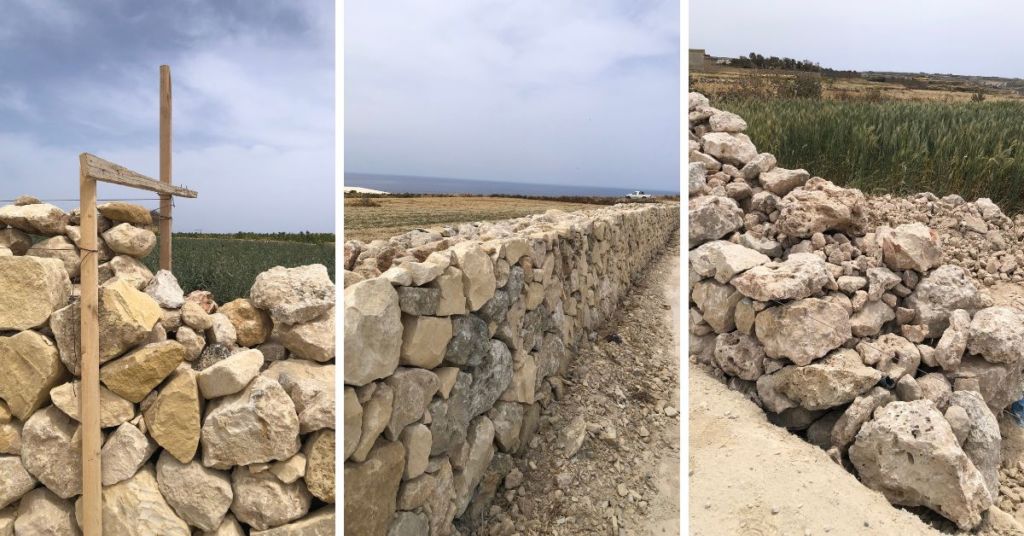This Is How Traditional Rubble Walls Are Supposed To Be Built In Malta

As the island continues to deal with an influx of concrete, Malta’s traditional rubble walls have also been susceptible to this obsession.
Concerns were raised over the last few weeks over the use of concrete inside rubble walls, veering away from the traditional method.
Lovin Malta went up to Gozo to meet with the director of Eco Gozo for an on-site visit in Għarb to learn more about the way traditional rubble walls are meant to be built.
“The method of reconstruction and reinstatement of rubble walls across Gozo is being carried out as per best practice drawn up by Perit Elizabeth Ellul in her book ‘Il-Ħitan tas-Sejjieħ,” he explained.
“The main aim behind the reconstruction of rubble walls is to limit soil erosion. Indeed, many of the reinstated walls were derelict in their state, leading to significant soil loss, especially during the wet season and sudden downpours.”
“More often than not the main cause of derelict walls is the lack of foundation with walls in the past built on existing thoroughfare levels. Water percolation from the soil behind over an extended period would lead to structural instability of the wall ending toppled over away from the field.”
“In broad terms, every site has the same procedure whereby following an initial topographical survey and current condition status a method of reconstruction is established.”
Invariably each site undergoes four phases:
- Dismantling of existing dilapidated walls and structures bordering public roads and walkways.
- Waste sorting of demolished material – Through the use of an earth-shaker on-site where conditions are permissible the existing random rubble wall stones are retained. The makeup of volume is done through the importation of solid rock from excavation off-site.
- Establishment of a foundation below existing thoroughfare levels depending on ground conditions up to a maximum of 800mm from the existing road level when ground conditions are soft.
- Reconstruction of random, dry, unhewn through a mixture of recycled and imported material.
“The wall is reconstructed with a lean (1:10 or 1:6 ratio depending on height) towards the field to ensure structural integrity – this is ensured through the use of wooden sticks and a light string along the length of the wall.”
“The front wall and back wall are then constructed and small rubble stones (known as ‘mażkan’) are used to fill the space in between.”
“Purge holes are then introduced at regular intervals to ensure drainage of water behind the walls that otherwise upon accumulation could lead to walls toppling over.”
“Walls are generally constructed 0.3m to 0.6m high above the existing soil level and no higher than 1.2m above soil level.”
“While it is also said to be cost-effective, the method ensures the structural integrity of the rubble walls for years to come whilst regenerating and recycling existing material.”
The on-site visit came following photos which were sent to Lovin Malta showing the use of concrete within the inside of the walls.
Share to raise awareness
